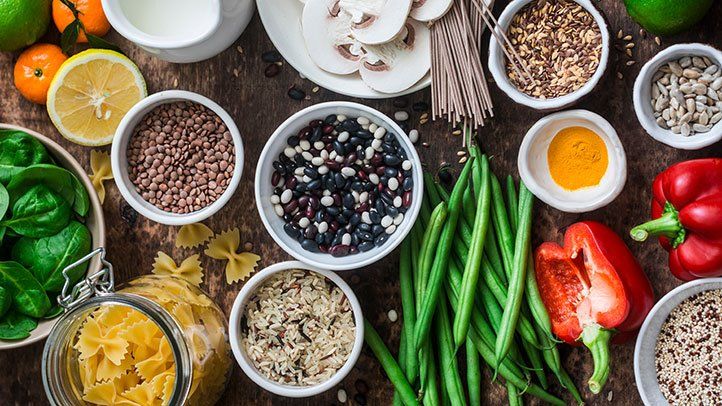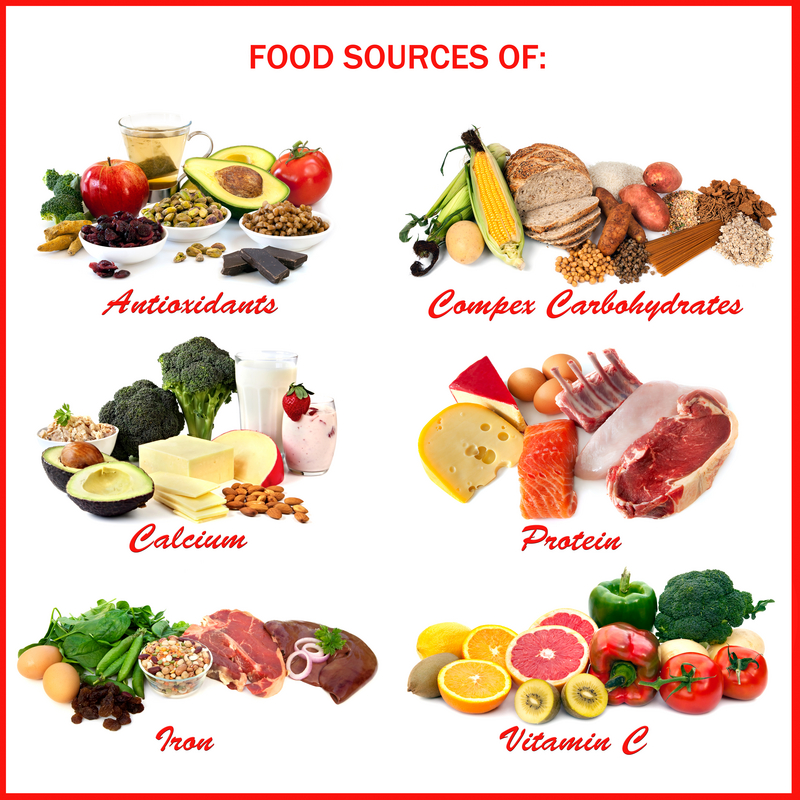
You don't have GERD to eat healthy foods. Your symptoms will improve and your chances of getting GERD are lower if you make changes to your diet. Your diet should be modified to include non-citrus fruits. Also, you can eat more vegetables and avoid the high-fat varieties.
Aside from fruits and vegetables, you can add fresh herbs to your meals to add flavor to your dishes. They should not be too acidic. Onions are great for adding flavor to your food without irritating your stomach. You can also use green or shallots for the same effect. Regardless of the type of onion you choose, you should start with a small amount and increase it gradually.
Tomatoes and tomato sauce are among the most common food items to avoid with GERD. Tomatoes are rich in lycopene. This powerful antioxidant fights cancer. However, acidity can cause inflammation of already inflamed tissue in your esophagus. For that reason, they should be avoided whenever possible. Besides tomatoes, other foods that contain lycopene are watermelons, and watermelon.

If you can avoid eating pizza every day, you should be able to eat it at least once a week. Combining spicy and fatty foods can make GERD worse. Fried and fatty foods are also to be avoided. Avoid alcohol, chocolate, and coffee. Caffeine drinks may cause acid reflux by irritating the esophagus. Those with GERD need to limit their consumption of caffeine drinks.
You should not eat spicy food regularly. While onions are an excellent staple, they can lead to heartburn. Onion stimulates production of acid, bile and other nutrients. The good news is that onions can be cooked to put out the fire. Adding onions to your list can help you manage GERD. So, while these are not the only foods to avoid with GERD, they are still important to know.
Although many of these foods should be avoided, some can worsen your symptoms. For example, spicy foods are best avoided if you have GERD. These foods can interfere with the lower end of the esophageal system, increasing stomach acid. Chocolates containing caffeine and cocoa should be avoided. All of these substances can be acidic and should not be consumed with GERD.
It is important that you are aware of what foods can trigger GERD symptoms. Some foods will exacerbate symptoms for some people while others can cause severe pain. Citrus fruits, citrus juice, alcohol, and other foods that can cause GERD are some of the things to avoid. These foods should be consumed in moderation to ensure your health. You should restrict the consumption of these foods in your diet. If you're not sure which foods to avoid with GERD, you should consult your doctor to discuss your symptoms.

If you have GERD avoid spiced foods and alcohol. The ingredients in these foods can contribute to the occurrence of GERD. Limiting your intake of these foods can lead to GERD. Keep in mind, however, that caffeine and alcohol are acidic. If you're concerned that your GERD symptoms may be caused by a particular food, try avoiding these foods.
Citrus fruits are another food that should be avoided if you have GERD. Consuming grapefruit and oranges are high in citric acid and can make your symptoms worse. It is important that you limit your intake of citrus fruits. You don't need to stop eating all citrus fruits. However, you should keep it at a moderate level. You can eat the fruit as much as you like and drink as many times as possible. Limiting your citrus fruit consumption is a good idea.
Avoid dairy products if GERD symptoms are present. Some people with GERD say dairy products can soothe their stomachs, but they can also aggravate the condition. Additionally, avoid caffeine, alcoholic drinks, as well as caffeine. Your diet may be a contributing factor to your GERD symptoms. You should talk to your doctor if you have any specific food allergies. If you have GERD symptoms, you can make a better choice.
FAQ
What are the 10 best foods to eat?
These are the top 10 foods to eat.
-
Avocados
-
Berries
-
Broccoli
-
Cauliflower
-
Eggs
-
Fish
-
Grains
-
Nuts
-
Oats
-
Salmon
Why does weight change as we age?
How do you determine if your bodyweight is changing?
Weight loss occurs when there is less fat than muscle mass. This means that daily energy needs must be greater than the calories consumed. Low activity levels are the most common cause for weight loss. Other causes include illness, stress, pregnancy, hormonal imbalances, certain medications, and poor eating habits. When there is more fat than muscles, it's called weight gain. It occurs when people consume more calories each day than they use. Common reasons include overeating, increased physical activity, and hormonal changes.
The primary reason we lose weight is that we consume less calories than what we burn. Regular exercise increases metabolism, which means that we burn more calories per day. But this doesn't guarantee that we'll lose weight. All that matters is whether we're losing weight or gaining muscles. Weight loss is possible if you burn more calories than you consume. If we consume more calories that we burn, we are actually storing them in fat.
As we age, our ability to move around is slower and we are less mobile. We also tend have less food to eat than when our children were young. Therefore, we tend to put on weight. We also tend to look larger because we have more muscle.
If you don't weigh yourself every week, it's impossible to determine how much weight has been lost. There are many options for measuring your weight. You can check your waist size, your hips, your thighs, your arms, etc. Some prefer to use the bathroom scales, others prefer to use tape measures.
You can track your progress by weighing yourself at least once per week and measuring your waistline every month. You can also take photographs of yourself every few years to track how far your progress has been.
Online, you can find out your height and weight. You'd likely weigh 180 pounds if you were 5'10 tall and 180 pounds if you were 180lbs.
What's the best diet?
The best diet for you depends on several factors, like your age, gender, weight, health conditions, and lifestyle habits. You should also consider how much energy your exercise consumes, whether you like low-calorie or high-calorie foods, and what you enjoy in terms of eating fruits and veggies.
Intermittent fasting might be an option for you if your goal is to lose weight. Intermittent fasting involves consuming only specific meals throughout the day, rather than having three large meals. This method may work better than traditional diets which include daily calorie counts.
Some studies suggest that intermittent fasting may improve insulin sensitivity and reduce inflammation, which can lead to improved blood sugar levels and reduced risk of diabetes. Research suggests that intermittent fasting can promote fat loss and improve overall body composition.
Are there 5 ways to have a healthy lifestyle?
A healthy lifestyle means eating right, being active, getting enough sleep, managing your stress levels, and having fun. You should avoid processed foods, sugar, or unhealthy fats. Exercise strengthens your muscles and helps you lose calories. Sleeping enough can improve memory and concentration. Managing stress reduces anxiety and depression. And finally, having fun keeps us young and vibrant.
Statistics
- WHO recommends consuming less than 5% of total energy intake for additional health benefits. (who.int)
- nutrients.[17]X Research sourceWhole grains to try include: 100% whole wheat pasta and bread, brown rice, whole grain oats, farro, millet, quinoa, and barley. (wikihow.com)
- WHO recommends reducing saturated fats to less than 10% of total energy intake; reducing trans-fats to less than 1% of total energy intake; and replacing both saturated fats and trans-fats to unsaturated fats. (who.int)
- In both adults and children, the intake of free sugars should be reduced to less than 10% of total energy intake. (who.int)
External Links
How To
What does the "vitamins” word mean?
Vitamins are organic compounds naturally found in food. Vitamins help us absorb nutrients from foods we eat. Vitamins are not made by the body, so they must be obtained through food.
Two types of vitamins exist: water-soluble vitamin and fat-soluble vitamin. Water-soluble vitamins dissolve easily when they are dissolved in water. Vitamin C,B1(thiamine), B2 (2riboflavin), and B3 (3niacin), as well as vitamin C,B1, B2 (riboflavin), and B3 (niacin), vitamin B6 (pyridoxine), vitamin folic acid (biotin), pantothenic, and choline are examples. The liver and fatty tissues are home to fat-soluble vitamins. These include vitamin D, E and K, as well as beta carotene.
Vitamins are classified according to their biological activity. There are eight major vitamin groups:
-
A - essential for normal growth and maintenance of health.
-
C is important for nerve function and energy production.
-
D - essential for healthy bones, teeth, and gums.
-
E - needed for good vision and reproduction.
-
K - essential for healthy muscles, nerves, and bones.
-
P - essential for strong bones, teeth and tendons
-
Q - aids digestion, absorption and absorption iron
-
R - Red blood cells are made from red blood cells.
The recommended daily allowance for vitamins (RDA) varies based on gender, age, and physical conditions. RDA values are set by the U.S. Food and Drug Administration (FDA).
For adults 19 years and over, the RDA of vitamin A is 400mg per day. Because it is essential for the development of the fetus, pregnant women should consume 600 micrograms per daily. Children ages 1-8 require 900 micrograms per day. Infants under one year of age require 700 micrograms per day, but this amount decreases to 500 micrograms per day between 9 months and 12 months of age.
Children ages 1-18years who are obese need 800 micrograms per day while those who are overweight need 1000 micrograms per day and children who are underweight need 1200 micrograms per day to meet their nutritional needs.
Children between 4 and 8 years old with anemia will need 2200 micrograms daily of vitamin C.
2000 micrograms are required daily for good health in adults over 50. Mothers who are pregnant, nursing, or have a high nutrient need will require 3000 micrograms a day.
Adults over 70 require 1500 micrograms each day, since they lose around 10% of their muscle mass every decade.
Women who have been pregnant or are lactating require more than the RDA. Pregnant women require 4000 micrograms daily during pregnancy, and 2500 micrograms every day after birth. Breastfeeding mothers require 5000 micrograms daily when breast milk production is occurring.